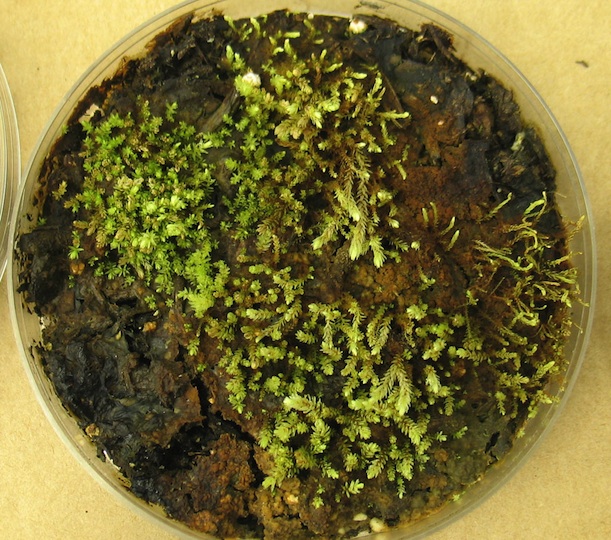Plants Frozen Under a Glacier for 400 Years Can Come Back to Life
Long-buried mosses recently exposed in the wake of a Canadian glacier’s retreat are sprouting new growth, a study shows
![]()

A moss (Aulacomnium turgidum), one of seven plants frozen under Teardrop Glacier roughly 400 years ago and induced to grow new stems and shoots in a lab. Image courtesy of Catherine La Farge
From 1550 to 1580, the period of cooling known as the Little Ice Age hit Ellesmere Island, in extreme northern Nunavut, Canada. As temperatures plunged, most of the island was swallowed by the advance of glaciers. The vegetation that had blanketed the terrain—mostly mosses and lichens—was buried under dozens of feet of ice.
In recent years, the reverse has happened. As a result of climate change, glaciers around the world have retreated rapidly, and Ellesmere Island has been no exception. The island’s Teardrop Glacier has retreated more than 650 feet, revealing numerous clumps of blackened, seemingly dead vegetation such as mosses and lichens that had been frozen for centuries.
But some of the vegetation was in fact far from dead. A research team from the University of Alberta led by Catherine La Farge surveyed the area revealed by the retreat of Teardrop Glacier and noticed that some of the largely blackened plants, including several mosses, had small green stems and lateral branches growing from them, indicating that they were experiencing recent growth.
The team showed that these plants, found right next to the edge of the retreating glacier, belonged to different species than those growing on the surrounding terrain, indicating they’d truly been buried until recently. Radiocarbon dating of the blackened parts of the plants confirmed that they were between 400 and 615 years old. The findings were published today in the Proceedings of the National Academy of Sciences,

Discolored mosses and lichens revealed by the melting of Teardrop Glacier. Image courtesy of Catherine La Farge
The researchers took samples from some of the plants just next to the glacier, which they determined had been uncovered sometime in the past few years, along with some that were still partially encased in ice. Back in the lab, they closely examined the samples and noted that new growth—green stems and shoots—was occurring on the centuries-old plants.

A new shoot grows on a centuries-old sample of Bartramia ithyphylla. LIA refers to “Little Ice Age” growth, which occurred more than 400 years ago. Image via PNAS/La Farge et. al.
Additionally, they ground up 24 different samples and sprinkled them over nutrient-enriched soil. Within months, plants had sprouted in 11 different petri dishes, representing seven of the different plants sampled.

Three different types of resurrected plants grow intermixed in a petri dish, next to a detail of a new shoot. Image via PNAS/La Farge et. al.
This remarkable resurrection was enabled by the fact that the plants were preserved at sub-freezing temperatures, allowing at least some of their cells to survive. Further, they all belong to a group of plants (called bryophytes) that grow clonally, so each of their cells can reproduce and then differentiate into any sort of cell that makes up the organism (a quality called totipotency). Additionally, microscopic analysis of the cells of the blackened, seemingly dead plants showed that their structural integrity had been well preserved by the ice, which in some cases left cell organelles and other tiny structures intact.
The discovery could substantially change our understanding of the way ecosystems regenerate after glacial retreat—a pretty important topic, given what’s currently happening to wide swaths of the Arctic given current melting trends. If glaciers serve as reservoirs of plant species that can potentially regenerate, it means that the ecosystems that sprout in the glaciers’ wake are more likely to be made up of these original plant types rather than the quickly-growing, newly arrived colonizing species scientists had previously assumed would dominate such environments.
Although most of the ecological news brought to us by climate change has been uniformly depressing, these newly resurrected plants, which now join a host of other life capable of regrowth after dormancy, show how incredibly durable and resilient life can be.
/https://tf-cmsv2-smithsonianmag-media.s3.amazonaws.com/accounts/headshot/joseph-stromberg-240.jpg)
/https://tf-cmsv2-smithsonianmag-media.s3.amazonaws.com/accounts/headshot/joseph-stromberg-240.jpg)